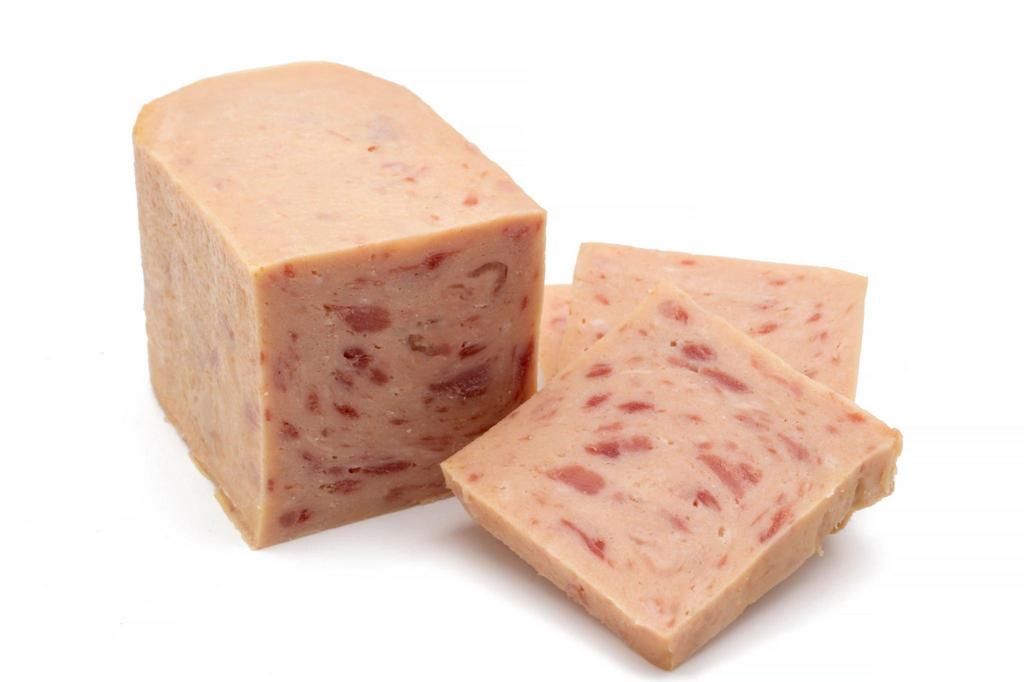Is Spam Gross? How Bad is the Taste and Flavor of Spam?

In the world of food, there are culinary sensations that are celebrated worldwide, like sushi or chocolate. Then there’s Spam – the mysterious canned meat that sparks equal parts curiosity and skepticism.
Its name can evoke strong emotions, but is Spam as bad as it sounds? Some people swear by it, while others cringe at the mere mention of its name. But is Spam really as gross as its reputation suggests?
This article takes you on a culinary adventure, diving headfirst into the fascinating world of Spam, dissecting its flavor and taste with the precision of a gourmet chef.
We’ll navigate through the history of this iconic canned meat, explore the various flavors it comes in, and even reveal some surprising recipes that can transform Spam from a questionable oddity into a delightful meal.
So, whether you’re a lifelong fan, an adventurous foodie, or a skeptic with doubts as firm as a canned Spam block, join us in this quest to answer the age-old question: Is Spam gross, or is it an underrated culinary gem? Let’s embark on this flavorful journey and discover the truth behind the Spam myth.
What is Spam? The Basics and History

Spam, that iconic canned meat, has made its mark in the culinary world as a versatile and often polarizing delicacy. But what exactly is Spam? At its core, Spam is a canned meat product made primarily from pork, although there are variations such as turkey Spam.
It’s notable for its long shelf life, affordability, and the convenience it offers to a wide range of culinary creations. But what sets it apart is the intriguing blend of meat cuts and seasonings, which come together to create a distinct and savory flavor.
The Basics of Spam
Spam is crafted from a combination of pork shoulder, ham, salt, water, sugar, and sodium nitrite, which acts as a preservative. The mixture is ground, blended, and then packaged in the familiar rectangular cans that line grocery store shelves. Its firm yet slightly chewy texture makes it adaptable for various cooking methods, from pan-frying to grilling, and even slicing it into cubes for soups and stir-fries.
A Peek into the History of Spam
Spam’s history dates back to 1937 when it was introduced by the Hormel Foods Corporation. It rose to prominence during World War II when it became a staple in soldiers’ rations due to its durability and long shelf life. Since then, Spam has found a place on countless American dinner tables, making it a symbol of comfort and curiosity.
Whether you’re a fan of this canned classic or just curious about its enduring popularity, the history and basics of Spam are fascinating, and they continue to intrigue food enthusiasts around the world.
The Taste of Spam
When it comes to taste, Spam is a complex subject. The flavor of Spam is distinct and can be described as savory and slightly salty. It has a meaty quality, and the texture is reminiscent of finely ground ham. Some people even find it quite delicious, often pan-frying or grilling it to enhance its taste and texture.
In many ways, the taste of Spam is an acquired one. If you grew up with it, you might have a fondness for its unique flavor. However, if you’re encountering it for the first time as an adult, it might take some getting used to.
Flavor Varieties
One of the interesting aspects of Spam is that it comes in various flavor varieties. While the classic Spam is the most well-known, there are other options to explore. Here are some of the popular Spam flavors:
1. Classic Spam: The original flavor that most people are familiar with.
2. Spam Lite: A lower-fat and lower-sodium version of the classic.
3. Spam with Bacon: A variation that includes small bacon bits for added flavor.
4. Teriyaki Spam: Infused with sweet and savory teriyaki sauce, offering an Asian-inspired twist.
5. Hot and Spicy Spam: For those who crave a bit of heat, this variety adds a spicy kick.
6. Garlic Spam: Infused with garlic for a flavorful twist.
These variations offer something for everyone, and they can significantly affect your perception of Spam’s taste and flavor.
How to Prepare Spam
The way you prepare Spam can also influence its taste. Many people opt to pan-fry or grill it, which gives it a crispy exterior and enhances its flavor. Here’s a simple guide on how to prepare Spam:
Pan-Frying Spam:
- Slice: Cut the Spam into slices of your desired thickness.
- Heat: Place a non-stick skillet over medium heat and add a bit of oil or butter.
- Fry: Place the Spam slices in the skillet and fry them until they are golden brown on both sides.
- Serve: Remove the Spam from the skillet and serve it hot.
Grilling Spam:
- Slice: Slice the Spam into pieces suitable for grilling.
- Preheat: Preheat your grill to medium-high heat.
- Grill: Place the Spam pieces directly on the grill grates and cook for a few minutes on each side until they have grill marks.
- Enjoy: Remove from the grill and savor your grilled Spam.
The cooking method you choose can significantly affect the taste and texture of Spam, so feel free to experiment and find your preferred preparation style.
Is Spam Gross? Debunking Myths and Stereotypes
Spam – just the word elicits a mixed bag of reactions. Some people cringe at the thought of it, associating it with mystery meat and excessive sodium, while others happily embrace it as a beloved comfort food. However, before we dismiss Spam as nothing more than a gross processed meat product, let’s take a moment to debunk some common myths and stereotypes.
Firstly, one prevailing myth is that Spam is made from low-quality scraps and offcuts of meat. In reality, Spam is made from pork shoulder cuts, which are relatively lean and flavorful parts of the pig.
The quality of these cuts directly affects the taste and texture of the final product. Though some may find the idea unappetizing due to its canned nature, it’s important to remember that preservation methods have come a long way since Spam was first introduced in 1937.
Furthermore, another stereotype about Spam is its high sodium content. While it’s true that each serving carries some saltiness (790 milligrams on average), it isn’t significantly different from other processed meats or even fast food options like hamburgers or hot dogs.
There are now lower-sodium versions available for those who require or prefer them. So although moderation is key when indulging in any processed food, claiming that spam is inherently worse than other similar products would be unfair.
The Controversy Surrounding Spam
Now that we’ve discussed the taste and preparation, it’s important to acknowledge the controversy surrounding Spam. While some people genuinely enjoy its flavor and versatility in the kitchen, there are legitimate reasons behind the negative perceptions.
1. High Sodium Content: One of the main concerns is Spam’s high sodium content. Excessive sodium consumption is linked to various health issues, including high blood pressure. Therefore, if you’re watching your sodium intake, Spam might not be the best choice for you.
2. Highly Processed: Spam is a highly processed food product, which can deter health-conscious consumers. The processing involves various additives and preservatives that some people prefer to avoid.
3. Mystery Ingredients: While the ingredients listed on the can are straightforward, the specific cuts of pork used can vary. This lack of transparency can be unsettling for some consumers.
A Versatile Ingredient
Despite the controversy and varying opinions, Spam is a versatile ingredient in the kitchen. It can be used in a wide range of dishes, from breakfast to dinner. Here are some creative ways to incorporate Spam into your meals:
Breakfast:
- Spam and Eggs: Pan-fry Spam slices and serve them alongside scrambled eggs for a hearty breakfast.
- Spam Breakfast Burrito: Wrap fried Spam, eggs, cheese, and your favorite breakfast ingredients in a tortilla for a delicious burrito.
Lunch:
- Spam Sandwich: Create a classic Spam sandwich with mayonnaise, lettuce, and tomato.
- Spam Salad: Dice Spam into small cubes and add it to a salad for a protein boost.
Dinner:
- Spam Fried Rice: Add diced Spam to your homemade fried rice for a satisfying and flavorful meal.
- Spam Tacos: Use grilled Spam as a filling for tacos, topped with your favorite salsa and veggies.
Snacks:
- Spam Musubi: A Hawaiian specialty, Spam musubi consists of Spam, rice, and seaweed, creating a delightful snack.
- Spam Fritters: Make fritters by coating Spam slices in batter and frying them until crispy.
Conclusion
So, is Spam gross? The answer is highly subjective. While some people enjoy its flavor and taste, others find its sodium content and highly processed nature to be repulsive. The key to enjoying Spam is to approach it with an open mind, try different varieties, and experiment with various cooking methods.
Spam, with its long history and unique place in American culinary culture, is certainly worth trying at least once. Whether you end up loving it or disliking it, you’ll undoubtedly have a memorable experience. After all, the world of food is full of surprises, and Spam is just one of its many intriguing facets.
In the end, the true taste and flavor of Spam are in the eye of the beholder. If you’re feeling adventurous, why not give it a try and decide for yourself? Who knows, you might discover a new favorite or, at the very least, gain a better understanding of this iconic canned meat.
FAQs on Processed Meat Taste
Why is Spam so popular in Hawaii?
Hawaii’s unique history with Spam dates back to World War II when it was a key source of meat. Its long shelf life and versatility made it a staple. Additionally, its fusion with traditional Hawaiian cuisine, like Spam musubi, solidified its popularity within the local food culture.
Is Spam bad for you to eat?
While Spam isn’t inherently harmful, its high sodium and preservative content can pose health risks if consumed excessively. It’s best enjoyed in moderation as part of a balanced diet.
Can you eat Spam raw?
Spam is a canned, pre-cooked meat product and is safe to eat straight from the can. However, it’s typically more palatable when cooked and heated.
How long does canned Spam last?
When unopened, canned Spam can last for up to 2 years if stored in a cool, dry place. Once opened, it should be consumed within a few days or stored in the refrigerator for up to a week.
Can you freeze Spam?
Yes, you can freeze Spam. It is recommended to wrap it tightly in plastic wrap or aluminum foil and store it in an airtight container. It can last for up to two months in the freezer.
What does Spam taste like?
Spam has a savory, salty flavor with a slightly meaty and processed texture. Its taste is often described as a combination of ham and pork, with a unique umami quality.
Is it safe to eat expired Spam?
Consuming expired Spam can be risky as its quality and taste may have deteriorated. It’s advisable to adhere to the expiration dates for optimal safety and flavor.
How can I make Spam taste better?
Spam can be enhanced by incorporating it into various recipes like stir-fries, fried rice, or sandwiches with complementary flavors such as pineapple, teriyaki, or spicy sauces.
Are there any vegetarian alternatives to Spam?
Several companies produce plant-based meat substitutes that can mimic the taste and texture of Spam. These alternatives are often made from ingredients like soy, wheat protein, or pea protein.






